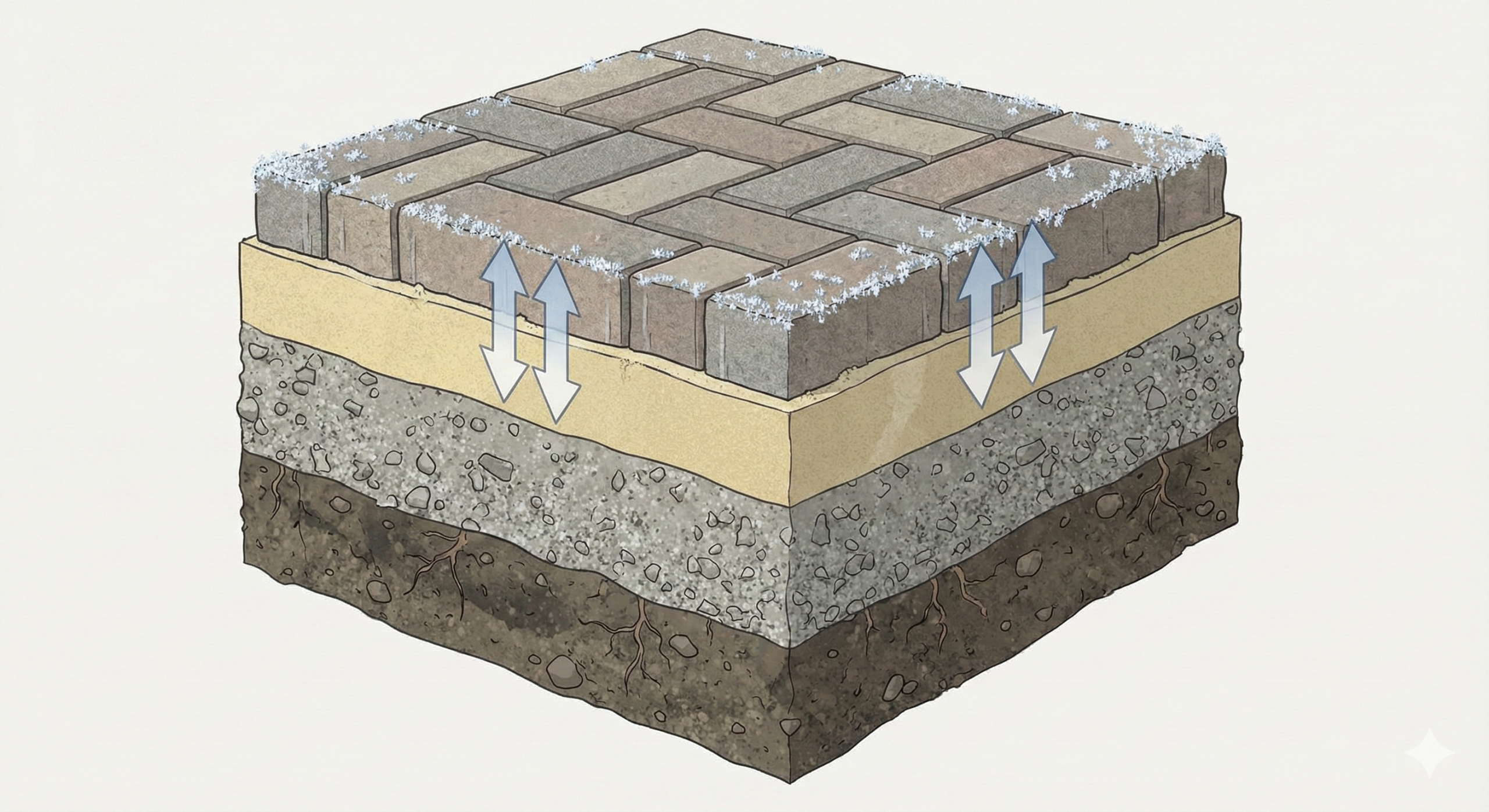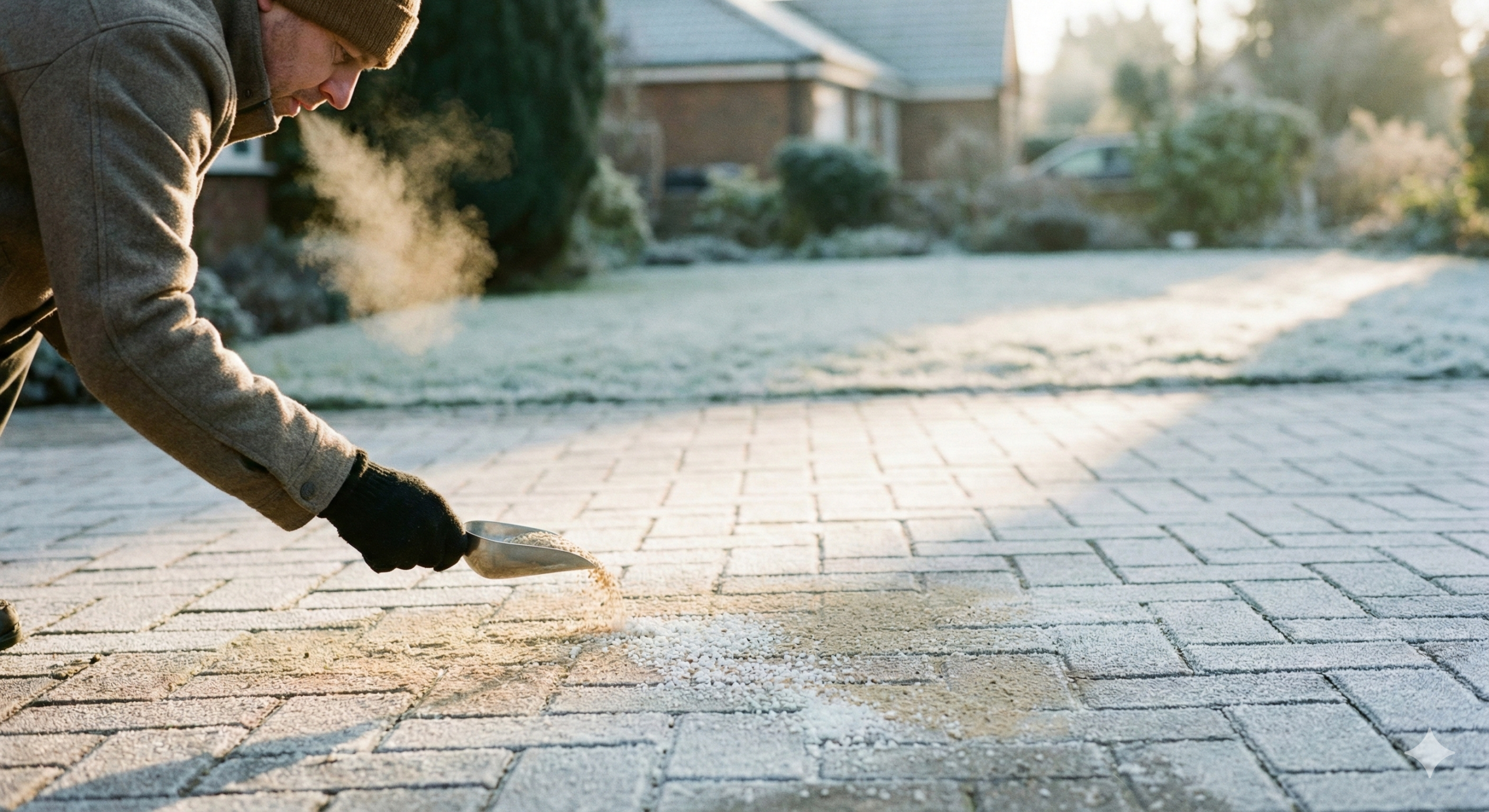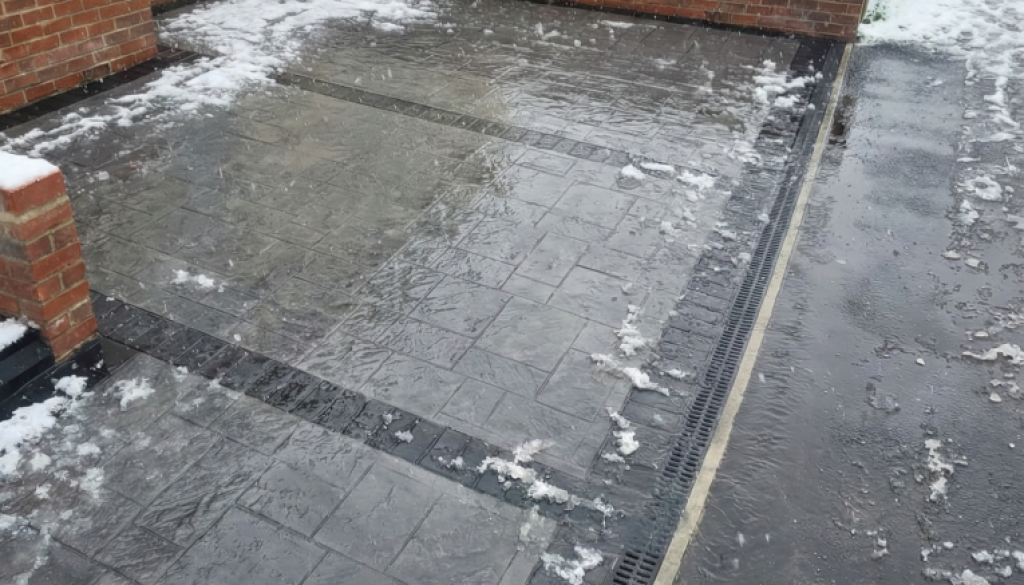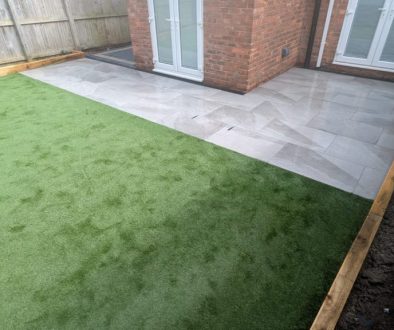Preparing Your Driveway for Winter Weather
As autumn fades and the North East settles into colder nights, driveways across the region begin facing the most demanding months of the year. Frost, standing water, heavy rain, and constant freeze–thaw cycles all test the strength of your driveway’s surface and foundation. Even the smallest crack or loose block can turn into a much larger problem once temperatures drop.
Many homeowners only take driveway damage seriously when winter is already in full swing. By then, repairs are more difficult and often more expensive. Preparing your driveway early makes all the difference, protecting both the surface and the sub-base beneath it. With the right steps, you can ensure your driveway stays safe, functional, and attractive throughout the cold season.
Why Winter Is Tough on Driveways
Winter brings a combination of moisture and low temperatures that no driveway can afford to ignore. Even well-built surfaces need some care to cope with seasonal stress.
The biggest issue comes from the freeze–thaw cycle. When water enters small cracks or joints within the driveway, it sits below the surface. As temperatures fall below zero, that trapped moisture freezes and expands. This expansion places pressure on the surface, forcing gaps wider, pushing up blocks, or creating dips. Repeated freeze–thaw cycles throughout winter accelerate damage at a surprisingly fast pace.
On top of this, winter rain saturates weakened areas, adding weight to the surface and softening the ground beneath. This can cause sinking, movement, and poor drainage long before spring arrives.
Early Autumn Maintenance to Prevent Winter Damage
Preparing your driveway starts long before the first frost arrives. Early autumn is the perfect time to tackle small maintenance tasks that may otherwise lead to major issues.
A good first step is clearing away leaves, soil, and debris. Organic matter traps moisture, and anything left sitting between joints can encourage weed growth. Sweeping regularly and using a blower around edges keeps the surface dry and clean. This alone reduces frost-related problems and improves how well water drains from the driveway.
Next, washing the surface helps remove moss, algae, and dirt. A pressure washer, used correctly, lifts contaminants that make surfaces slippery in winter. Removing this build-up also exposes cracks or weak areas you might not have noticed before.
Finally, inspect edging stones, kerbs, and the borders of the driveway. Any looseness here can lead to shifting once the ground freezes. Tightening and securing these areas early helps maintain the shape and structure of the driveway through the coldest months.

Strengthening Drainage Before Heavy Rain
Poor drainage is one of the biggest causes of driveway deterioration, especially in the North East where prolonged rainfall is common. When water is allowed to pool on the surface, it increases the amount of moisture that can freeze inside the driveway.
Before winter arrives, check how your driveway handles rainfall. After a heavy shower, walk the full length of the surface and note any puddles or areas where water takes too long to drain. Standing water is a warning sign of compaction issues, sinking, or poor gradients.
Improving drainage may involve clearing existing channels, ensuring block paving joints are properly filled with kiln-dried sand, or re-levelling edges where water regularly gathers. In some cases, a professional may recommend adding small drainage slopes or improving the sub-base so water flows away more efficiently. Fixing drainage before winter dramatically reduces the risk of frost-related cracking and keeps the driveway cleaner for longer.
Repairing Small Issues Before They Become Big Problems
Minor defects are easy to overlook during warmer months, but once temperatures drop, they worsen quickly. Winter magnifies every weakness, so addressing small issues early is essential.
Start by checking for cracks in concrete, tarmac, or resin surfaces. Even hairline cracks should be sealed because they act as entry points for water. Once this water freezes, cracks become wider, deeper, and far more expensive to repair.
For block paving, look for loose or rocking blocks. These indicate movement underneath, often caused by a weakened sub-base or washed-out jointing sand. Replacing sand between blocks and re-setting any loose sections restores stability before frost can spread the gaps.
If sections of the driveway appear sunken or uneven, repairing them early prevents the problem from spreading across a wider area. Small dips may only need joint filling or surface re-levelling, but leaving them until winter risks deeper structural issues. Early repairs always cost less and last longer.
Protective Treatments for Different Driveway Materials
Different driveway materials respond differently to cold weather, but all benefit from protective treatments that strengthen their resilience.
Block paving can be sealed to protect against moisture penetration. A good quality sealant locks in jointing sand, prevents weeds, and adds a water-resistant layer that stops frost damaging the blocks. Sealants also enhance the colour of the paving, which can dull over time without protection.
Resin-bound driveways already offer good permeability, but cleaning and checking for any surface lifting before winter helps maintain performance. Resin surfaces should be kept free of moss and debris so water passes through easily, reducing freeze-thaw risk.
Tarmac benefits from a sealcoat to prevent brittleness during cold weather. Over time, UV exposure dries out tarmac surfaces, making them more prone to cracking in winter. A sealcoat restores flexibility and adds a protective layer that repels water.
Concrete driveways can be sealed with penetrating products that reduce porosity. This helps prevent spalling, cracking, and water absorption during freezing conditions.

Keeping Driveways Safe Throughout Winter
Once winter sets in, the focus shifts to maintaining safety and preventing accidents. Ice, frost, and moisture can make any driveway slippery, so it’s important to adopt winter-friendly maintenance habits.
Using de-icing salt sparingly can help prevent ice build-up, but avoid corrosive salts that damage surfaces. Instead, opt for calcium magnesium acetate or sand, which improve traction without harming the driveway. Clearing snow promptly also reduces moisture penetration and prevents compacted ice from forming beneath the surface.
Regular visual checks throughout winter help spot issues early. If new dips, cracks, or drainage problems appear during cold weather, addressing them quickly stops long-term structural damage.
Winter-Ready Driveways for North East Homes
Preparing your driveway for winter is one of the simplest ways to protect your home’s exterior from costly repairs. Early maintenance, drainage checks, protective treatments, and timely repairs all play a role in keeping driveways strong through harsh conditions.
Whether your driveway is made from block paving, resin, concrete, or tarmac, the steps taken before winter will determine how well it performs by spring. A little care now helps avoid cracking, sinking, and safety hazards later in the season.
Need help getting your driveway winter-ready? Contact M&C Paving Northeast today for expert maintenance, repairs, and installation services across the North East.




